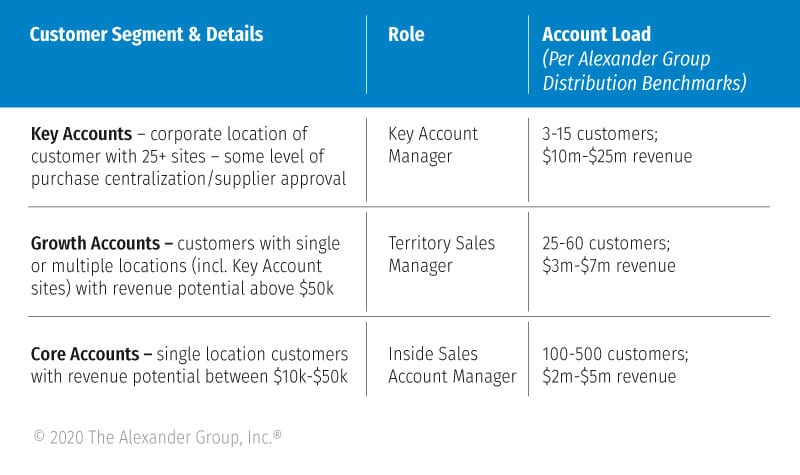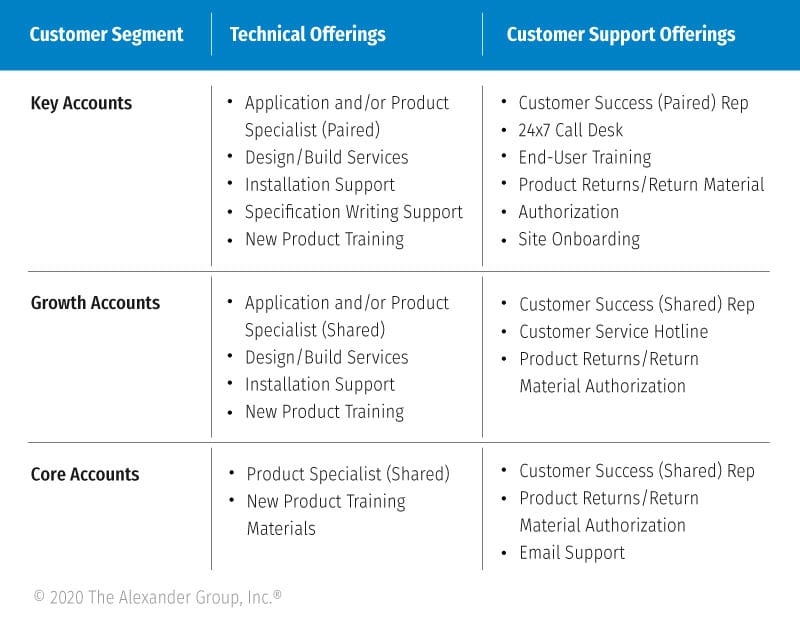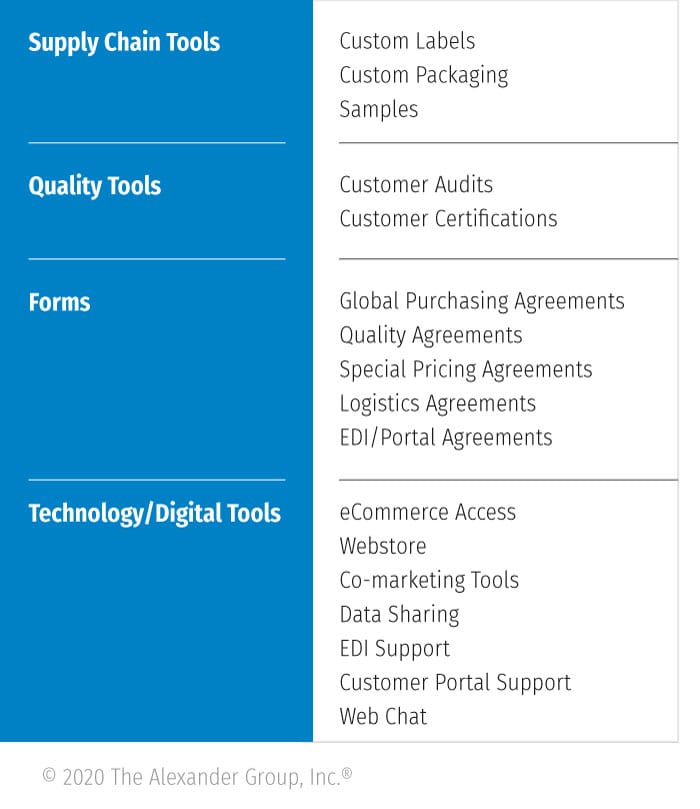Distributors: Protect & Grow Margin by Differentiating Service Levels – Part 3

Successful distributors differentiate commercial service levels (CSLs) based on customer need and value.
In part 1 and part 2 of this series, the key inputs were outlined to successfully design CSLs for your organization and the capabilities and responsiveness to differentiate product and service offerings. In this article, we will discuss the third category of service level components: support.
- Part 1: Inputs – gathering opportunity data, voice of customer and other information required to build CSLs
- Part 2: Capabilities & Responsiveness – differentiating product and service offerings, response time, solution customization and lead times
- Part 3: Support – differentiating access to the resources (e.g., sales, marketing, service and support), technology and tools that span the buyer journey
- Part 4: Terms & Pricing – differentiating the payment terms, shipping practices and pricing agreements
Part 3: Support
Support service levels address the number, type and quality of resources distributors offer customers at times throughout the relationship. The support function is traditionally the most people-intensive customer service level and therefore can be the most costly. However, the true cost and associated ROI of the customer-facing organization is often misunderstood and misdirected. As technology becomes a competitive differentiator, tool cost should also be considered as distributors look to differentiate support levels for customers of differing value.
Sales & Marketing Service Levels
Monolithic sales coverage models (i.e., serving all customers with the same model, usually territory sales reps) are relics of the past in distribution. Current models feature a portfolio of roles, including territory sales reps, inside sales account managers, key account managers and digital account reps. While no role is considered to be “better” than another, roles differ in competencies and productivity expectations and succeed when deployed to a specific customer type. An example sales service level model may resemble the following:

Service levels also apply to marketing resources. Digital marketing or account-based marketing can be used to push standard materials to the broader market, but distributors can dedicate senior marketing resources to customize materials and value propositions for highly valued customers. Additionally, lead generation resources can be aligned to the marketing function and are typically deployed to growth or key accounts only.
Appropriately segmenting customers and aligning sales and marketing service levels help to maximize growth (by matching customer needs to role competencies) and manage overall cost to serve.
Technical & Customer Support Service Levels
Similar to the sales and marketing example, technical and customer support functions are competitive differentiators but come at a cost. The responsibilities under the “technical” umbrella differ across distribution segments. Chemical distributors deploy specialists to help create proprietary blends. Industrial distributors assign automation specialists with engineering skills. Distributors across segments offer technical resources to help install and integrate complex systems. Whatever the work entails, these resources often function as overlays and increase the cost to support customers.
The customer support function encompasses typical post-sales activities – order entry and tracking, issue resolution and remote support. The main distinction between customer support service levels is whether support is “paired” or “shared.” In a paired model, a customer has an assigned customer support contact(s) that acts in a concierge or white glove capacity. In the shared model, customers call in to (or digitally interact with) a pool or resources, similar to most B2C models. Typical technical and customer support models resemble the following:

Technology & Tools Service Levels
Another service level category that differs by end market is technology and tools. Depending on the customer, distributors can differentiate by offering digital engagement and e-commerce tools to automate ordering or data sharing. Supply chain tools also fit into this bucket―distributors can offer customized packaging or free samples to customers. Distributors can also provide certification to customers or dealers to be able to sell certain brands or products.
Service level differentiation for digital tools is a contentious issue. One argument for providing digital commerce avenues is that it lowers cost to serve and is easy for customers to use (depending on the tool). The counter argument is that if the wrong customers are pushed onto the e-commerce platform, the relationship might become overly transactional, reduce stickiness with the sales organization or allow for cherry picking of products.
The universe of technology and tools available to distributors is rapidly expanding; the following list includes typical offerings.

Distributors grow at above-market rates when they effectively align support service levels to customer segments. Commercial teams should consider buyer needs, growth potential, ROI and strength of partnership when allocating limited support resources and tools across the customer universe.
Next in our series, learn how to set apart your service level approach by using terms & pricing–differentiating the payment terms, shipping practices and pricing agreements.
If you have questions around commercial service levels at your company, please contact one of Alexander Group’s Distribution practice experts.